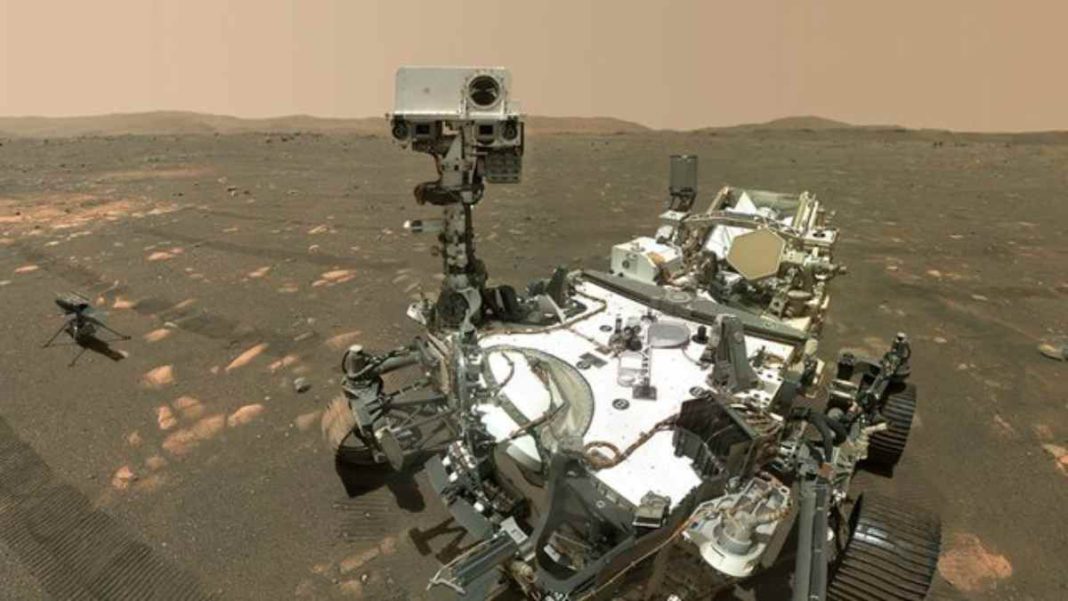UNITED STATES: NASA’s Perseverance rover has reached a significant milestone in its mission on Mars, as it recently discovered a diverse range of organic molecules within the planet’s Jezero Crater.
This groundbreaking finding, published in the renowned journal Nature, has immense implications for the quest to uncover potential signs of life on the Red Planet, according to scientists involved in the mission.
Organic molecules, which are primarily composed of carbon and hydrogen, form the fundamental building blocks of life on Earth. These complex compounds often incorporate other elements like oxygen, nitrogen, phosphorus, and sulphur.
The detection of such organic matter on Mars not only sheds light on the planet’s carbon cycle but also raises tantalizing possibilities of ancient or even current life on the neighbouring planet.
The authors of the study emphasized the importance of the presence and distribution of preserved organic matter on Mars’s surface. This discovery could provide crucial insights into the planet’s history and its potential to harbour life throughout the ages.
Understanding the Martian carbon cycle and the roles of organic synthesis, transport, and preservation is vital to unravelling the mysteries of potential life beyond Earth.
While various types of organic molecules have been previously identified in Martian meteorites found on Earth and within the Gale crater on Mars, their origin remains ambiguous.
Researchers are cautious not to definitively attribute these materials to a “biotic” source, suggesting that they might be the result of non-biological processes or interactions.
The quest to determine the true origins of organic matter on Mars has given rise to multiple explanations, including the possibility of water-dust interactions or the delivery of organic compounds through dust or meteor impacts.
The study highlights that the potential organic molecules detected are predominantly associated with minerals formed during aqueous processes.
This correlation suggests that water may have played a pivotal role in the synthesis, transport, or preservation of these organic compounds on the Red Planet.
Dr. Sunanda Sharma, a scientist from NASA’s Jet Propulsion Laboratory, expressed the presence of multiple hypotheses surrounding the origin of organic matter on Mars, drawing insights from studies of Martian meteorites and previous missions.
Perseverance’s successful exploration of the expansive Jezero crater, where it touched down in February 2021, has been crucial to these recent findings.
The rover’s state-of-the-art instrument, the Scanning Habitable Environments with Raman and Luminescence for Organics and Chemicals (Sherloc), has enabled fine-scale mapping and analysis of organic molecules and minerals on Mars.
The Sherloc instrument detected signals of organic molecules across all ten targets it observed on the Jezero crater floor, marking a significant milestone in the mission.
The discovery of new organic compounds is important, but not all of them have a biological origin, say scientists. In evaluating the potential origins and recognizing biosignatures, the spatial interactions between minerals and organics must be considered.
As explained by Ashley E. Murphy, a researcher at the Planetary Science Institute and co-author of the study, our knowledge of Earth’s past life is restricted to what has been preserved in the rock and mineral record. Some minerals have shown a greater ability to preserve organic compounds than others.
As NASA’s Perseverance rover continues its exploration of Mars, the discovery of diverse organic molecules in the Jezero Crater represents a significant leap forward in our understanding of the Red Planet’s potential for habitability and the existence of life.
These findings pave the way for future missions and reinforce humanity’s enduring curiosity to unlock the mysteries of our celestial neighbours.
Also Read: Canoo Delivers Futuristic Electric “Astrovans” for NASA’s Artemis Missions



